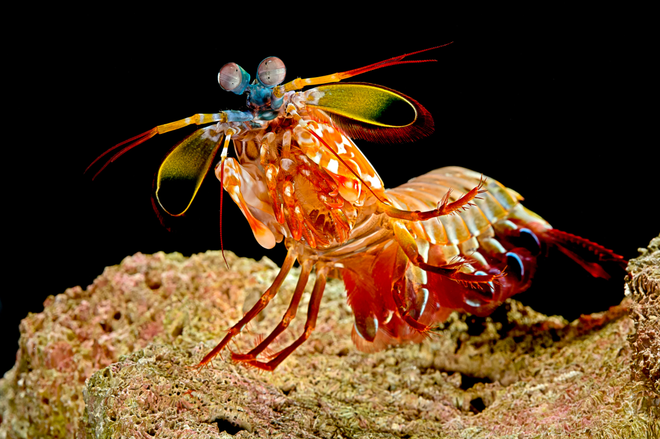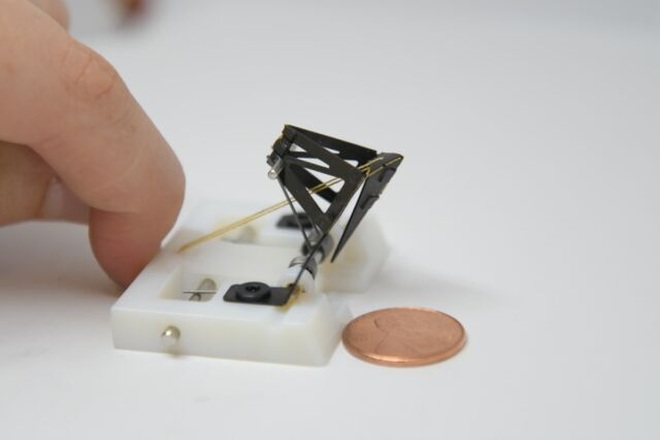
Mantis shrimp, mantis shrimp, boat shrimp, surface shrimp or hammer shrimp is the name used to call the group of marine crustaceans belonging to the order Stomatopoda. They are also known in English as Mantis shrimp, mainly because of their strange appearance, neither shrimp nor mantis.
The ancient Assyrians called the Mantis shrimp “sea grasshopper”. In Australia, they are known as “Prawn killers” and European and American fishermen give them the name “Thumb splitters” because they can pinch the skin of their fingers if not careful when handling them. remove them from the net.
Strange appearance
Mantis shrimp can be up to 30cm long, with head armor covering only the back of the head and the first 4 segments of the thorax. The eyes of this shrimp have special structures, considered the most complex in the animal kingdom.
They have 8 pairs of legs, of which 5 have claws at the top, then swimming legs. However, what interests scientists most is the claws of this shrimp, with a structure divided into two types, either spear-like or hammer-shaped.

In particular, spear shrimp with claws are very sharp and pronged, looking like the claws of a mantis, used to stab and tear prey. As for the hammer shrimp (smasher) with claw-shaped claws, used to smash prey and break food.
Both types of Mantis shrimp mentioned above have an attack strategy of opening their claws quickly and slamming harder and harder on their prey. The blow can cause serious injury to prey, even if the prey is much larger than mantis shrimp.
The power that science cannot explain
The Mantis shrimp’s “punch” is famous for its force equivalent to a 22mm bullet, making it one of the fastest and most powerful attacking animals on the planet.
A 2018 study revealed the secret behind the Mantis shrimp’s powerful punch, as it comes from the structure inside the claw.
Basically, the crayfish has a mechanism of action similar to a crossbow or mousetrap. When in a ready state, the muscles within it will stretch in a saddle-shaped structure at one end. This structure is bent like an arc and stores huge potential energy. When the shrimp releases this muscle, it’s like a holding pin is released.
In another way, the mechanism of action of the crayfish is simply like a classical spring. But why this system works so efficiently and so powerfully, science still cannot explain.

Current time 0:09
Length 0:18
Time remaining 0:09
Mantis shrimp use claws to break shells

Describe the mechanism of action of the Mantis shrimp.
Based on ultra-fast imaging equipment, it has been scientifically recorded that the Mantis shrimp’s claws can reach speeds of up to 23 meters per second, or more than 80 kilometers per hour, and the power is equal to the force generated by a 22mm caliber bullet.
The blow is so powerful that it can separate air from water, occurs in bubble bursts, or produce superluminescence when the water surrounding its claws is subjected to friction and reaches extreme temperatures. High.
With such a powerful attack, the Mantis shrimp can easily smash the shells of mollusks, crabs, snails and even rock oysters. In many cases, the shock wave from the blow can stun stun and sometimes directly kill the prey.
In rare cases, Mantis shrimp can shatter aquarium glass with a single blow with their claws.

The robot simulates the claws of the Mantis shrimp
Scientists have tried to create a robotic system that mimics the punch of the Mantis shrimp, but so far has not been able to reach the power and speed that this shrimp can do.




